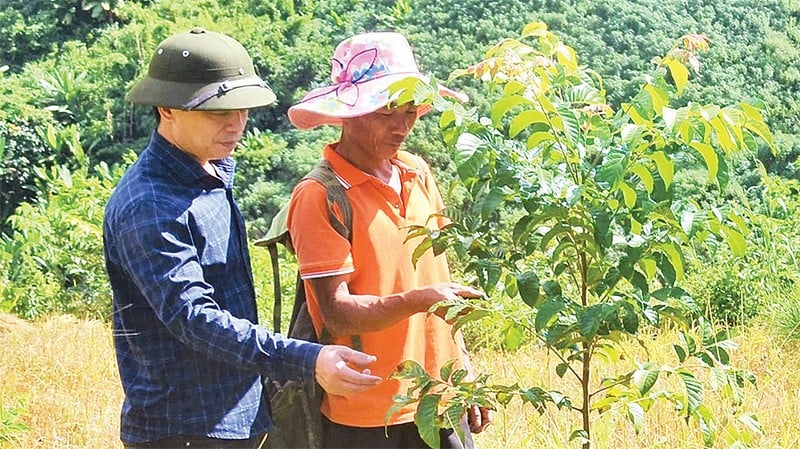
Pointing to the green hillsides along the Nam Muc River, Mr. Sin Van Nam, Head of Hin Village, informed about the initial achievements of the people in the past three years. He said: The entire riverside mountain slope of nearly 50 hectares is mainly planted with two types of timber trees: lat and pine. In the first phase, people focused on planting and caring for the trees to grow healthily and create a canopy that extends to the upper layers. After 5 years, when the trees are stable, people will intercrop medicinal plants (such as cardamom, amomum) below. The hillside in the distance is also lush with green.
Mr. Nam added: On that hillside are 20 hectares where 15 pioneering families converted cassava and upland rice to plant forests from 2022. Currently, 20 hectares are pine and cypress trees growing evenly and healthily. Next, an area of more than 16.8 hectares of upland rice of 12 families has converted crops in 2024, switching from growing cassava to growing pine and cypress.
The lowest tree layer is an area of 10 hectares newly planted by Hin villagers in 2025, which has taken root and grown evenly. Notably, the entire forest area converted by the villagers from upland is part of the provincial sustainable forest protection and development project for the period 2021-2025; the implementing unit is the Provincial Management Board of Protective Forests and Special-Use Forests, which guides and supports the implementation.
As one of 15 families in Hin village who have boldly converted food crop land to forest land since 2022, Mr. Sin Van Tham has a lot of experience in planting and caring for forest trees. Mr. Tham said: My family has 1.4 hectares that have just been converted from cassava fields to forest land and 0.65 hectares of forest planted since 2022. Up to now, the trees have grown well.
With the guidance of the technical staff of the Provincial Forest Protection and Special Use Forest Management Board, my family and I cleared the bushes around the tree roots and learned how to loosen the soil to allow air into the soil for the trees to grow well. He added that the newly planted trees are still short (more than two hand spans), but next year, the trees will grow quickly and grow taller. When planting forest trees, there is no need to weed, clear, or spray pesticides regularly, just clear once a year. Once the trees take root, they will live naturally and do not need much care.
Also a pioneer in converting upland to forest plantation after being propagated and encouraged, Sin Van Dung still clearly remembers the hesitation before deciding to stop growing cassava and corn. Dung said, when I heard the officials say that our family's upland area was in the special-use forest planning and needed to plant large timber trees, I was very worried. Because although growing cassava and corn is hard work, there is still a little food each season.
Now that we don't plant anymore, we don't know where to get the money to make up for it. After the staff explained in detail, when we converted from farming to forestry, we would be supported with planting, care, and protection costs in the first few years. When the trees grow big, we will receive forest money, so we feel secure. "Currently, my family has 2.8 hectares of land to grow teak and pine trees. With the current development, in just four years, my family will be eligible to receive forest protection and care costs," said Mr. Dung.
Understanding the significance of forests and the benefits they enjoy, up to now, the whole Hin village has had dozens of families register to convert their upland land to afforestation, with an estimated area of about 500 hectares. In the coming time, the people in the village will continue to survey and expand the forestation area in addition to the production upland land. The head of Hin village said: In recent years, seeing the benefits and value of forests, many families have wished to participate in the afforestation project. At this time, 134/134 households have registered to plant forests and hope that the protective forestation project will continue to be implemented in the area.
Mr. Duong Dinh Le, an officer of the Provincial Management Board of Protective Forests and Special-Use Forests, said: The planted forest area in Hin village has a very high survival rate because the people are aware of protection and good care. Many swidden areas of Hin village people are included in the protective forest planning and in just a few years, this place will be covered with green forests.
Thanks to their determination and daring to abandon traditional farming thinking, the people of Hin village are joining hands to “plant” the future, “plant” assets for future generations. In just a few years, today’s barren fields will become green protective forests, contributing to preserving soil, preserving water, and keeping the environment greener and cleaner…
Source: https://nhandan.vn/nguoi-dan-ban-hin-manh-dan-chuyen-doi-sinh-ke-post921504.html








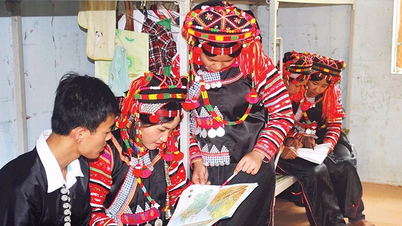
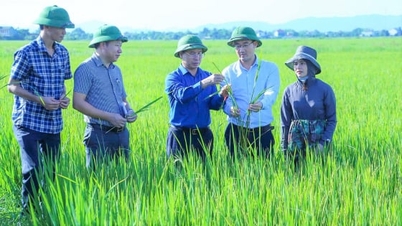










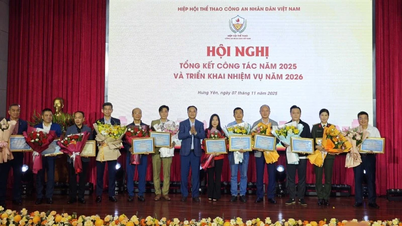


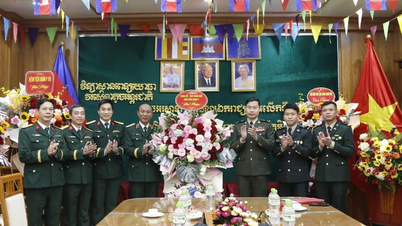


![[Photo] Da Nang: Hundreds of people join hands to clean up a vital tourist route after storm No. 13](https://vphoto.vietnam.vn/thumb/1200x675/vietnam/resource/IMAGE/2025/11/07/1762491638903_image-3-1353-jpg.webp)





















































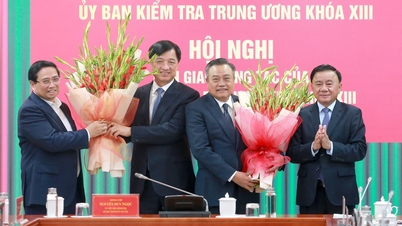




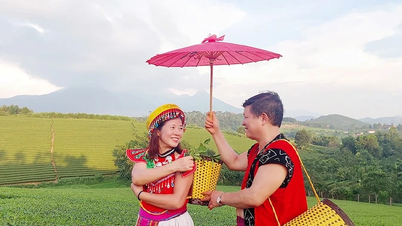



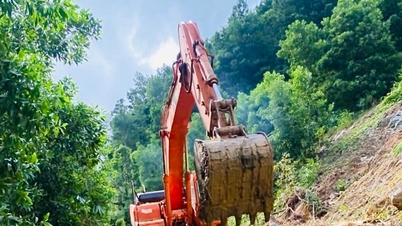














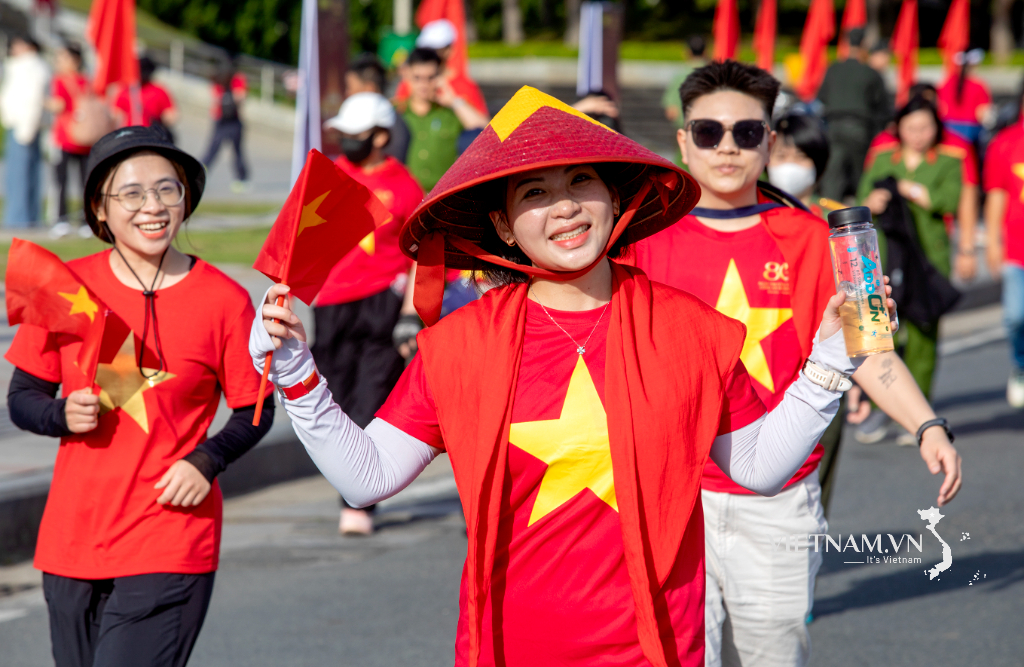


Comment (0)